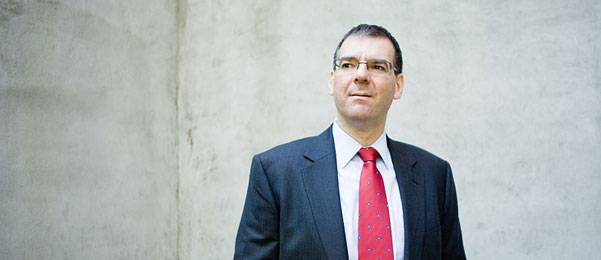What’s In It for Them?
Professor Ron Adner says having a great idea is not always enough to succeed.

When Sony launched its Reader in 2006, it was heralded as a game-changing device. With an innovative screen, expansive memory, and novel search capabilities, Sony's was the first electronic-book reader that offered an experience that could compete with traditional books. But as Tuck professor Ron Adner explains in his new book, The Wide Lens (Portfolio Penguin, 2012), a great idea and great execution are not enough.
The success of your innovation often depends on the ability and willingness of many other partners to collaborate with you. In Sony's case, explains Adner, the company did a great job building its hardware platform, but didn't have a compelling proposition to motivate book publishers and online distributors to get e-books into the hands of interested buyers.
"For a successful ecosystem, multiple partners not only need to be aware of the need to collaborate, but they must also be ready to embrace their respective roles," he explains. "So you've got an e-reader, I've got a digital book. We know we need to come together, but who moves first? Who's the one responsible for the customer experience? Who's going to drive the system forward?" Amazon's Kindle, launched in 2007, was a clunkier device with an inferior screen, but it coupled easier downloads for users with powerful incentives for publishers like pricing subsidies and strong anti-piracy protection. "Sony was first to market with a great product, but Amazon was first with a full solution. In an ecosystem world, solutions win."
Adner's book, to be released in March 2012, explores a host of innovations— from the iPhone and electric cars to inhalable insulin and run-flat tires—to distill a new set of principles for innovation success and failure in a world of interdependence. And although the book is aimed at decision makers in firms and nonprofit organizations, Adner hopes the currency of the cases, many of them well worthy of cocktail conversation, will give the book crossover appeal to a general audience.
The kinds of collaborations that we can attempt have grown exponentially. But most oragnizations don't have the strategies yet for how to do it."
Ron Adner
The Wide Lens addresses a problem that has faced innovators since Thomas Edison. On its own, the lightbulb was useless; it required an electrical power network to work. "We've always had systems of innovation," he explains. "But the way we previously brought these systems together used to be dominated by large firms—Westinghouse, General Electric. They would pull these things together. For the last 20 years or so, because of the incredible progress in information and communication technologies, firms' ability to coordinate and collaborate has exploded. So the kinds of collaborations that we can attempt have grown exponentially. But most organizations don't have the strategies yet for how to do it. Strategy hasn't quite caught up."
In the book, Adner shows why firms must go beyond the traditional focus on execution risk. They must also consider other kinds of risks: co-innovation (who else needs to successfully commercialize their own innovation?) and adoption chain (who else needs to participate?).
One of the key features of successful ecosystem innovation is what Adner calls "carry-over," leveraging partnerships that were developed in one ecosystem to support the creation of another new ecosystem. Carryover, he argues, has been the hidden key to Apple's success with the iPhone and iPad. It is also why Amazon's recently launched Kindle Fire tablet, will be a far more formidable rival to the iPad than any previous tablet. "It's a completely different way of competing than just launching a piece of hardware—whereas HP, Samsung, Motorola, and others have launched standalone products, Amazon will carry over the full set of collaborations employed in its Kindle e-book reader to offer an enhanced value proposition from the start."
Adner, who won Tuck's electives teaching excellence award in 2011, has figured out his own methods of carry-over. "I develop research ideas and bring them to the classroom, and then bring the classroom interactions back into my research. I also do a Research-to-Practice Seminar on ecosystem strategy, so I have the opportunity to work through these ideas with great students in a small-group setting. It's a fantastic environment for ideas."